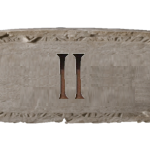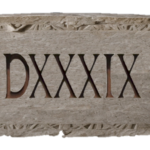Or 3 in Roman Numerals

The Roman numeral III represents the number 3 in the decimal system. Roman numerals are a system of writing numbers that use letters to represent different values.
The basic symbols are I (1), V (5), X (10), L (50), C (100), D (500), and M (1000).
To form other numbers, these symbols are combined according to some rules.
For example, if a smaller symbol is placed before a larger one, it means subtraction.
If a larger symbol is placed before a smaller one, it means addition. Therefore, III means I + I + I, which is 3. You can use the code
You can just convert any number into a Roman numeral using this converter.
Decimal to Roman Numerals Converter
Roman Numerals 1- 24
Example:
Here are some fun facts about the Roman numeral III:
- III is the Roman numeral for 3, which is written as three I’s, which represent one unit each. To convert III to Arabic numerals, the value of each letter is added up, i.e. III = 1 + 1 + 1 = 3.
- III can also be used to denote the third scale degree or the chord built on it in music theory. For example, in the key of C major, the third scale degree is E and the chord built on it is E minor, which can be written as III or iii.
- Three is the number of The Holy Trinity of Father, Son and Holy Ghost in Christianity.
Three Wise Men came to Jesus bearing three gifts; gold, frankincense and myrrh.
Jesus spread Christianity for three years – according to the Gospel of John. Jesus predicted that Peter would deny knowing him three times before the cock crowed. - In Roman mythology, there were three Fates, three Graces, and three Gorgons. The Fates were goddesses who controlled the destiny of humans and gods.
The Graces were goddesses of beauty, charm, and joy. The Gorgons were monstrous sisters who had snakes for hair and could turn anyone who looked at them to stone. - In ancient Rome, there was a law called the Lex Duodecim Tabularum (Law of Twelve Tables), which was the first written code of Roman law.
It consisted of twelve bronze tablets that were displayed in the Forum. The third table dealt with debt and the rights of creditors.
It allowed creditors to seize the property of debtors and even enslave them or cut them into pieces if the debt was not paid


